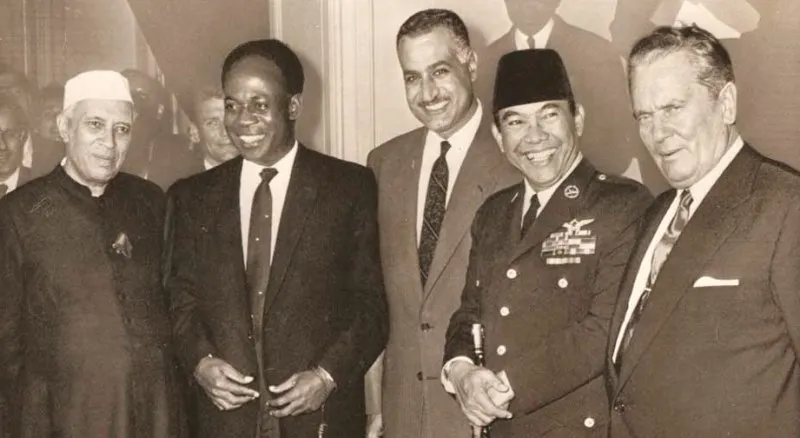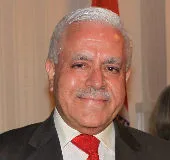
Vice President M. Hamid Ansari led the Indian delegation to the 17th summit of non-aligned countries in the Venezuelan island of Margarita on September 17 and 18, 2016. This is only the second time that the Indian Prime Minister has not participated in the Summit, the last occasion being in 1979 when the then caretaker Prime Minister Charan Singh decided to give it a miss. Questions have been raised on the reason for Prime Minister Narendra Modi declining the invitation, although reportedly, the timing of the Summit was moved from July, 2015 to September this year to suit his convenience. Moreover, two special emissaries from Venezuela had visited India to extend invitation to PM Modi to participate in the Summit.
Did Prime Minister Modi decide not to go because India no longer sees value in the institution? Or is it because, as some have suggested, NAM was conceived and launched by the first Prime Minister of India Pandit Jawaharlal Nehru whom the Bharatiya Janta Party does not hold in high esteem and whom it charges, to put it mildly, of having mismanaged the domestic and foreign affairs of the country?
From all available evidence, it does not appear plausible that the second reason mentioned above had any role to play in Modi's decision to stay back and instead designate Vice President Ansari to represent India at this congregation. Since his assumption of office, Prime Minister Modi has taken decisions, both in domestic and foreign policy arenas, based on hard facts to promote India's political, strategic and economic interests, and not for any whimsical or capricious reasons.
From the point of view of protocol, representation by the Vice President does not indicate a lessening in importance of the Non Aligned Movement (NAM) in India's calculus. The Vice President occupies a higher position in the constitutional pecking order in India than the Prime Minister does. In concrete terms however, it could be construed by some as a down-scaling because substantive executive authority vests in the office of Prime Minister. Vice President Ansari, however, because of his background, experience, scholarship, statesmanship and erudition, has carved out a unique, enviable position for himself, domestically and globally. He commands a much higher position in national and international reckoning than enjoyed by several of his predecessors. It is appropriate that Vice President Ansari's deep understanding, clarity of thought and knowledge is put to good use by the government. This has played a significant role in promoting India's image as a country that promotes a syncretic and pluralistic ethos and culture.
India's participation could have been considered a down-grade if instead of the Vice President, it was represented by External Affairs Minister Sushma Swaraj as was being speculated in the initial phases before the decision was taken.
To examine whether the institution of NAM has become irrelevant, it will be useful to recall the objectives for which this institution was established in the aftermath of the Second World War.
Along with Presidents Josep Broz Tito of Yugoslavia, Gamal Abdel Nasser of Egypt , Sukarno of Indonesia and Kwame Nkrumah of Ghana, Nehru was the architect of the Non-Aligned Movement which was established on the emergence of two blocs, one led by USA and the other by the Soviet Union in the wake of the Second World War. The objective was not to stay neutral on issues and challenges confronting the international community, but to adopt common and joint positions based on merits of each case. In addition, the movement was committed to fight against colonialism, imperialism, racism and apartheid, and to create a new international economic order which would be fair and equitable and safeguard the interests of developing countries.
As far as India is concerned it would be useful to distinguish between the philosophy and ideology of ''Non Alignment'' which lays emphasis on strategic independence and autonomy, and the ''Non Aligned Movement'' which seeks to take a collective position on challenges faced by the developing world. This necessarily tends to be the lowest common denominator. The essential fundamentals of Non Alignment were enunciated by Nehru in the early 1950s and were encapsulated in the Bandung Declaration in Indonesia in 1955. India's experience of the Non-Aligned Movement was disappointing as the Group decided to take an equidistant position in India's 1962 war with China, in the 1965 war with Pakistan and in India's 1974 peaceful nuclear explosion. India has however felt it useful to continue to support and actively engage with the Movement because it has provided a high profile and strong voice to India in international fora and affairs.
End of the Cold war and disintegration of the Soviet Union in 1991 proved to be a watershed in the evolution of NAM. NAM was forced to carve out a new role for itself as its initial objectives of de-colonisation and end of apartheid had been largely realized by then. Although ensuring peace, security and economic development of developing countries has emerged as the new mantra to be pursued by the movement, there has been scant agreement between members on policies required to fulfill these objectives. This is so because several members of the grouping including India have been strengthening their engagement with the developed world to invite capital, technology, better management practices, larger markets etc to improve the economic conditions of their citizens. Rapid advance of globalisation, at least till the international financial and economic crisis in 2008 and sovereign debt crisis in Europe in 2010, has significantly brought down economic and physical borders between the North and South. Rising challenges to globalization in recent years reflected in Brexit in Europe and rise of isolationist, anti-immigrant and protectionist positions in election campaign in USA have thrown up new contradictions which developing countries need to effectively contend with. Terrorism and threats to peace and security have emerged as fresh challenges that need to be dealt with head-on by the international community in a united manner.
It is these issues that the 17th NAM Summit set itself to address. Confidence in and credibility of the movement has suffered in recent years because it has been relegated to the status of a talk-shop as it has been unable to adequately address problems and threats that accost the developing world.
In the 21 Article final declaration adopted by the assembled leaders under the theme, "Peace, Sovereignty and Solidarity for Development," countries reaffirmed their commitment to safeguard human rights, disarmament of weapons of mass destruction, fight against terrorism, promote Sustainable Development Goals, reform of United Nations, deal with issues related to refugees and migrants, support education, youth and women, confront climate change, and bolster inter-religious and intercultural dialogue. The final document resembles a Christmas tree on which issues of interest, concern and significance to all countries have been pegged.
The rapidly declining heft and importance of NAM was evident from the fact that out of the total of 120 countries, just around 10 were represented by senior leadership of Presidents, Vice Presidents and Prime Ministers of their countries. Most of these, in addition to the host of last summit Iran, were from Venezuela's neighbourhood like Bolivia, Costa Rica, Cuba and other traditional supporters like Zimbabwe and Palestine. This was partly a reflection of the reduced clout of the host country because of its economic decline and the political challenges being faced by President Maduro as compared to the domineering personality of former President Hugo Chavez. This number is also a poor comparison to the more than 30 leaders that participated in the Summit in Tehran in 2012.
It will however be incongruous to write off the movement. In addition to the substantive issues that it discusses and debates, all of which are extremely significant and relevant to peace, security, stability and prosperity of the world, an important advantage of the summit gatherings is the opportunity it provides to leaders of the movement to meet and confabulate with each other on issues of bilateral, regional and international concern. Vice President Ansari utilised the opportunity to confer with Presidents of Iran, Cuba and Vice President of Nepal in addition to his meeting with the host President Nicolás Maduro of Venezuela.
India should hence continue to engage actively with the Movement and derive maximum benefit possible for itself and members of the grouping by articulating its views on major issues of international concern and interest.
The views expressed above belong to the author(s). ORF research and analyses now available on Telegram! Click here to access our curated content — blogs, longforms and interviews.




 PREV
PREV


